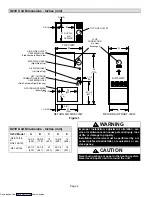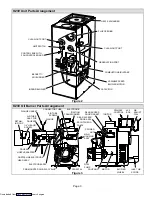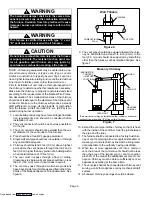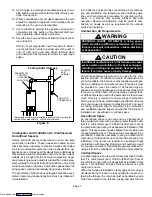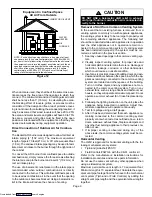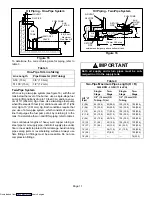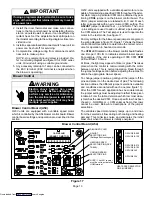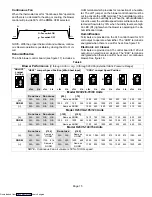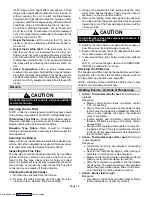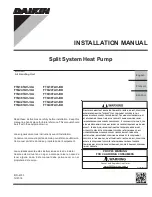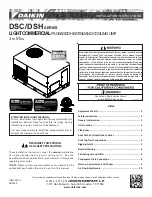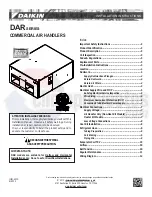
Page 6
WARNING
The barometric damper shall be in the same atmo-
spheric pressure zone as the combustion air inlet to
the furnace. Deviation from this practice will cause
improper burner operation and may result in a fire
hazard.
WARNING
This furnace is certified for use with type L" vent.
B" vent must not be used with oil furnaces.
CAUTION
Do not store combustible materials near the furnace
or supply air ducts. The material (such as paint, mo-
tor oil, gasoline, paint thinner, etc.) may ignite by
spontaneous combustion creating a fire hazard.
NOTE − Oil burning equipment may be vented into an ap-
proved masonry chimney or type L vent. (Type L vent is
similar in construction to type B gas vent. Type L vent car-
ries a higher temperature rating and is constructed with an
inner liner of stainless steel, rather than aluminum.)
Prior to installation of unit, make a thorough inspection of
the chimney to determine whether repairs are necessary.
Make sure the chimney is properly constructed and sized
according to the requirements of the National Fire Protec-
tion Association. The smallest dimensions of the chimney
should be at least equal to the diameter of the furnace vent
connector. Make sure the chimney will produce a steady
draft sufficient to remove all the products of combustion
from the furnace. A draft of at least .04" w.c. (9.9 Pa) is re-
quired during burner operation.
1. Local building codes may have more stringent installa-
tion requirements and should be consulted before
installation of unit.
2. The vent connector should be as short as possible to
do the job.
3. The vent connector should not be smaller than the out-
let diameter of the vent outlet of the furnace.
4. Pipe should be at least 24 gauge galvanized.
5. Single wall vent pipe should not run outside or through
any unconditioned space.
6. Chimney should extend 3 feet (0.9 m) above highest
point where the vent passes through the roof, and 2
feet (0.6 m) higher than any portion of a building within
a horizontal distance of 10 feet (3 m).
7. The vent must not pass through a floor or ceiling.
Clearances to single wall vent pipe should be no less
than 6" (152 mm); more if local codes require it.
8. The vent may pass through a wall where provisions
have been made for a thimble as specified in the Stan-
dards of the National Board of Fire Underwriters. See
figure 6.
Wall Thimble
Figure 6
THIMBLE
VENT PIPE
COMBUSTIBLE
WALL
9. The vent pipe should slope upward toward the chim-
ney on horizontal run at least 1/4 inch (6 mm) to the
foot (0.3 m) and should be supported by something
other than the furnace, such as isolation hangers. See
figure 7.
Masonry Chimney
BAROMETRIC
CONTROL*
(IN EITHER
LOCATION)
CLEAN OUT
CLEAN OUT
LINER
MASONRY
CHIMNEY
Figure 7
*Barometric control may be installed in either vertical or horizontal
section of flue pipe within 18" of flue outlet of furnace.
10. Extend the vent pipe into the chimney so that it is flush
with the inside of the vent liner. Seal the joint between
the pipe and the liner.
11. The furnace shall be connected to a factory built chim-
ney or vent complying with a recognized standard, or
masonry or concrete chimney lined with a lining mate-
rial acceptable to the authority having jurisdiction.
12. When two or more appliances vent into a common
vent, the area of the common vent should not be less
than the area of the largest vent or vent connection
plus 50% of the area of the additional vent or vent con-
nection. Chimney must be able to sufficiently vent all
appliances operating at the same time.
13. The vent pipe shall not be connected to a chimney vent
serving a solid fuel appliance or any mechanical draft
system.
14. All unused chimney openings should be closed.
Downloaded from


